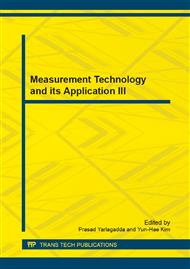
In this paper, knock detection and analysis methods of the gasoline engine are applied to a modified kerosene engine. Two kinds of signals, the cylinder pressure signal and the vibration signal, are acquired by a pressure sensor mounted in a spark plug and an accelerometer mounted on the cylinder block separately. Due to the influence of noise, such as cam shocks, piston up-and-down motion, crank rotation and so on, the vibration signal should be processed to extract knock feature. Firstly, FFT, a frequency analysis approach, is used to determine the characteristic frequency range of knock. Then, combining the sampling frequency, the vibration signal is divided into different frequency sub-bands, and the characteristic sub-band of DWT, a time-frequency analysis method, is determined. After that, DWT is applied to extract knock feature from the vibration signal. At last, the knock energy evaluation index is used to judge knock intensity. The reference knock energy is chosen by the researchers, and it is not absolutely suitable for the engine operating condition, so intuitive cylinder pressure signal is applied to supplement for knock judgment.
You might also be interested in these eBooks
Info:
© 2014 Trans Tech Publications Ltd. All Rights Reserved
[1]
Li Binglin, Wei Minxiang. Research Status and Technical Analysis of Piston Engine Burning Kerosene [J]. Small internal combustion engine and motorcycle, 2012, 41(6):87~90.
Google Scholar
[2]
Hooper P. Initial development of a multi-fuel stepped piston engine for unmanned aircraft application [J]. Aircraft Engineering and Aerospace Technology, 2001, 73(5): 459-465.
DOI: 10.1108/00022660110403005
Google Scholar
[3]
Sochet I, Gillard P. Flammability of kerosene in civil and military aviation [J]. Journal of Loss Prevention in the Process Industries, 2002, 15(5): 335-345.
DOI: 10.1016/s0950-4230(02)00031-1
Google Scholar
[4]
Garrett R K. Is a Single Fuel on the Battlefield Still a Viable Option? [R]. Industrial Coll. of the Armed Forces, Washington DC, (1993).
Google Scholar
[5]
Yang Zhiming, Li Longqiang. Research on the gasoline engine burning kerosene or diesel [C]. The Chinese Engine conference about special engine, 2006: 44-48.
Google Scholar
[6]
Park S T, Yang J. Engine knock detection based on wavelet transform [C]. The 8th Russian-Korean International Symposium on IEEE, 2004, 3: 80-83.
DOI: 10.1109/korus.2004.1555680
Google Scholar
[7]
Wu Xiaomin, Wang Ying, Li Fuming. Comparison of knock detecting between ionic current method and block vibration method [J]. Journal of Xi'an Jiaotong University, 2001, 35(10): 1059-1061.
Google Scholar
[8]
Boubai O. Knock detection in automobile engines [J]. Instrumentation & Measurement Magazine, IEEE, 2000, 3(3): 24-28.
DOI: 10.1109/5289.863907
Google Scholar
[9]
Wan Yongge. Digital signal processing on Matlab [M]. Beijing: Science Press, 2007: 180-186.
Google Scholar
[10]
Yang Jianguo, Liu Xiaofeng, Lin Bo. DWT based knock detection and knock intensity judgment for a gasoline engine [J]. Transactions of CSICE, 2003, 21(3): 233-238.
Google Scholar


